Frost bites kiwifruit crop
Peter Burke peterb@ruralnews.co.nz












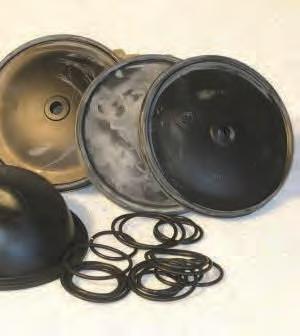
HORT NZ chair Barry O’Neil has been growing kiwifruit since 1984 and says this is one of the worst years he’s had.
Just on 70% of O’Neil’s own crop has been wiped out by the frost, which means that he’ll effectively lose 75% of
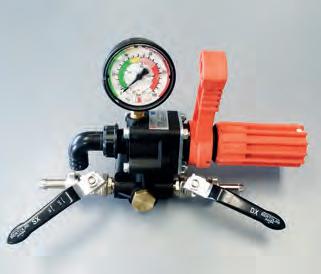
his income for next season. He’s not the worst affected – other orchardists have lost their entire crop.
Like O’Neil, those affected face the prospect of having to still maintain and keeping their orchard going knowing full well that they will have to rely on the ‘generosity’ of their bankers to get them though this crisis.
“I very much feel for everyone that is struggling financially because of the frost and also as an industry we have had a big issue with fruit storage and losses,” he told Hort News. “This has happened at the same time as our costs are increasing and we haven’t got the revenue from the fruit numbers.”

O’Neil says the estimated loss from

the frost could be in the order of a billion dollars to the industry.





O’Neil says he’s always been aware of the cyclical nature of the weather and what impact it might have from time to time. In his case, he always budgeted on having no income every five years but reiterates that this season has been exceptionally bad.



“The ground is so wet in some cases and in many areas they have had three times the annual rainfall before the end of the year,” he says.
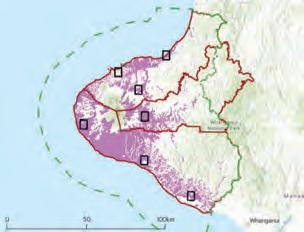
“The soil is so saturated that it only takes a small rainfall to get water pooling again in paddocks. Normally the soil will absorb the rain but it’s so saturated it can’t.”
A DECEMBER wet spell threw a spanner in the works for many berry growers around the country in the lead-up to Christmas. Rain was a problem for Canterbury grower Norm Mundy, where it damaged strawberries on his hydroponic operation at Belfast, near Christchurch. “If it rains for more than half a day or so, it damages them,” he told Hort News. “They go white on the tips where the water’s been sitting and botrytis sets in and they’re unsalable.”




See full story page 4.

HORTNEWS JANUARY 2023 WWW.RURALNEWS.CO.NZ ISSUE 29 Boosting Taranaki’s horticulture – Page 9
A NOT SO BERRY CHRISTMAS!
Replacement Spray Pumps & Spray Kits Webbline Agriculture is a direct importer/reseller of a full range of pumps from market-leading manufacturers, along with service kits and accessories. Large range in stock. Dealer enquiries are welcome. View online - www.webbline.co.nz Contact Ben 021 819 482 | ben.boakes@webbline.co.nz WAIKATO • MANAWATU • CANTERBURY • SOUTHLAND
Is hort’s star fading?
Peter Burke peterb@ruralnews.co.nz
THE LATEST report on the state of NZ primary exports shows that the value of horticultural exports has slowed and that the outlook for the coming season is fraught with challenges.
The Situation Outlook for Primary Industries (SOPI) is a quarterly report produced by the Ministry for Primary Industries (MPI) designed to provide a snapshot of the current dollar returns for our primary exports. It also forecasts likely outcomes over the next two years and provides commentary on global issues affecting the primary sector.
In its most recent report, released in December, MPI says that horticulture exports for the year ended June 30, 2022 were $6.7 billion – a 2% increase on the previous year, which was itself a modest 1% increase on the 2020 season.
The report also
predicts that in 2023 the value of hort exports will hit just over $7 billion, but it’s the wine industry that is driving this rise. Of concern, and perhaps not unexpected, is that the revenue from kiwifruit will be down by more than $400 million. While the figures for apple export returns are expected to rise, there is conjecture about whether this may actually happen due climatic conditions last spring.
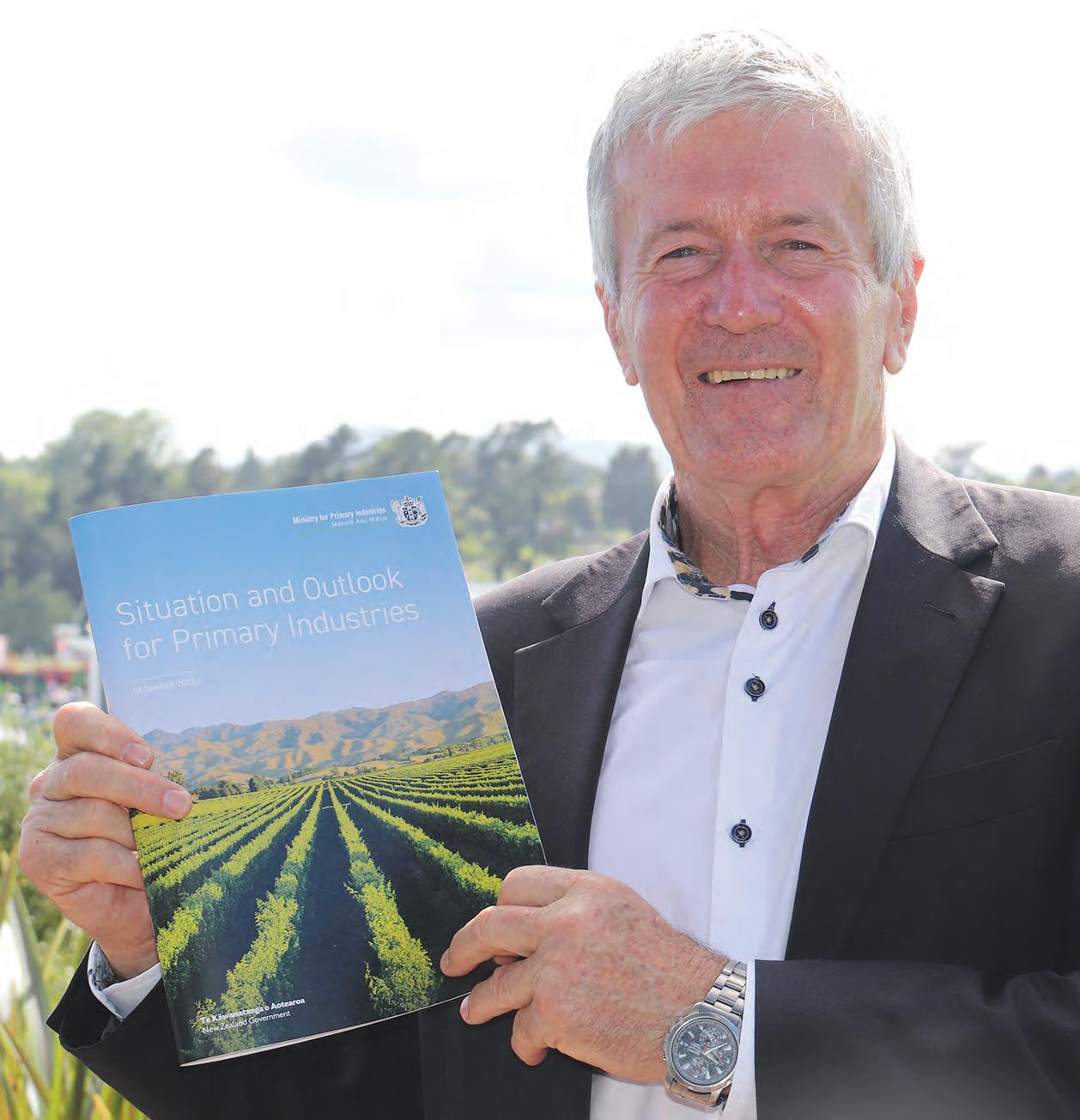
Looking at kiwifruit, MPI is upfront in stating that the sector is facing some challenges, some of which are new and some – namely fruit quality – are a hangover from the previous season. The issue of soft fruit arose in the past season and Zespri has a major investigation underway to find out the reasons for this and to come up with effective mitigation strategies.
One obvious reason is that fruit picking was rushed due to labour shortages and not enough attention was
ESCORTED TOURS 2022/23

"Hassle-free travel for mature travellers’’

• FAR NORTH & BAY OF ISLANDS (4 spots available) 7 days, depart 17 September. A leisurely coach tour of the Far North including the new Hundertwasser Art Centre and day trip to Cape Reinga.
• EAST COAST & NAPIER (6 spots available) 8 days, depart 21 September. A unique and exciting tour around the East Cape and return via the Northern Explorer train
• CHATHAM ISLANDS DISCOVERY 8 days, depart 20 October. A special place for a safe and relaxing close-to-home all inclusive holiday.
• BEST OF THE SOUTH ISLAND
15 days, depart 22 November A spectacular trip around the many highlights of the South Island taking in the wonders of Tekapo, Twizel, Stewart Island day excursion, the Milford Sound and Queenstown. Overnight cruise on the Milford Sound.
• NEW PLYMOUTH 'CHRISTMAS LIGHTS' 5 days, depart 23 December. A Christmas get away featuring the magnificent light display at Pukekura Park along with some great sightseeing during the trip.
• WAIKIKI BEACH & HAWAII CRUISE
11 days, depart 25 May 2023 A 'Pride of America' cruise for 7 nights with a Waikiki highlights 3 day stop over including Pearl Harbor and Oahu round Island tour.
• TAHITI & SOCIETY ISLANDS CRUISE
10 days, depart 21 July 2023 Set sail on board Le Paul Gauguin for an unforgettable journey to discover idyllic sands and atolls. Tour includes flights to/from Papeete.
For full details
Phone 0800 11 60 60 www.travelwiseholidays.co.nz
paid to quality control. Also, some of the pickers and those in postharvest operations lacked experience. There is some hope that things may improve in the coming season,
However, the big worry remains what effect the terrible frost that hit growers in
the Bay of Plenty and Waikato last October will have this harvest. Some growers lost their entire crop, others part of it and some were not affected at all.
MPI is predicting that the 2022/23 kiwifruit crop will be down by 10%, others have suggested this could be as high as
20%. The answers will only be known when the fruit appears on the vines and growers assess how it looks when picking begins.
The problems of the last two seasons will hit growers in the pocket. Poor quality fruit will see returns down and this will be compounded by
HOW BAD COULD IT BE?
WHILE THE figures themselves and some of the narrative paints a somewhat negative picture, the SOPI report uses the words ‘positive’ and ‘recovery’ to inject some optimism into the equation.
It points to the ongoing demand for high quality fresh fruit in our main markets. But like all primary producers, the same headwinds remain, such as worldwide rising inflation, Covid, shipping and other logistical delays. There are also questions over the availability of sufficient quality labour right through the supply chain and the fragility of some markets.
rising input costs. The effects of the frost will hit growers in 2024 when they get paid for this season’s crop; some may get no income at all.
MPI is also predicting that apples are also facing a challenging season. While export returns are expected to rise to $2.4 billion, again,
question marks hang over this. The reason is that climatic conditions for pollination and fruit set in spring were variable, with some orchardists describing the situation as disastrous. This comes on top of a poor 2020/21 season, which saw export volumes at their lowest level since 2015.
China is the second largest market for our horticultural exports – just behind the EU. While it has the advantage of being closer to NZ than Europe, there remains concern about Covid lockdowns and other disruptions.
And then it’s the state of the NZ dollar, which has helped prop up returns.
Agriculture Minister Damien O’Connor says the kiwifruit industry has grown strongly but he concedes there is now a need for different systems to combat the climatic variations that are being experienced. He says it’s a challenging time for the industry and the sooner the
primary sector gets on with dealing with climate change the better.
“It’s not for the Government to dictate what growers should do,” O’Connor says.
“All we can do is give them clear guidelines and get the market signals back to them. Horticulture has traditionally been very good at getting market signals back to their growers and they in turn have adapted and changed.”
The outcome of the 2022/23 season is unclear given the number of variables at play and all the modelling in the world may not be able to predict the final outcome and MPI admits as much.
2 HORTNEWS JANUARY 2023
Agriculture Minister Damien O’Connor with a copy of the SOPI report released in December 2022, which says that horticulture exports for the year ended June 30, 2022 were $6.7 billion.
Despite challenges spuds remain a billion-dollar business
we’ve heard at the PNZ grower insight meetings held last year.”
sudeshk@ruralnews.co.nz
DESPITE FACING major challenges, New Zealand’s potato industry remains a billion dollar business.
Data from 2021 presented in the Potatoes New Zealand (PNZ) annual report shows minimal impact on production despite a rough couple of years. The overall value of the industry including the domestic and export markets dropped slightly to $1.095 billion. The domestic market dropped slightly from $1,054,857 to $993,447 in value.
However, growers believe their industry remains under pressure despite the pandemic disruption abating. Potato growers across the country say they have continued to navigate regional plan changes, restrictive government policies, ongoing pest challenges, weather events and rising costs of production.
Despite all of this, growers have continued to deliver to markets the best NZ potatoes and produce the best NZ potato products, the report says.
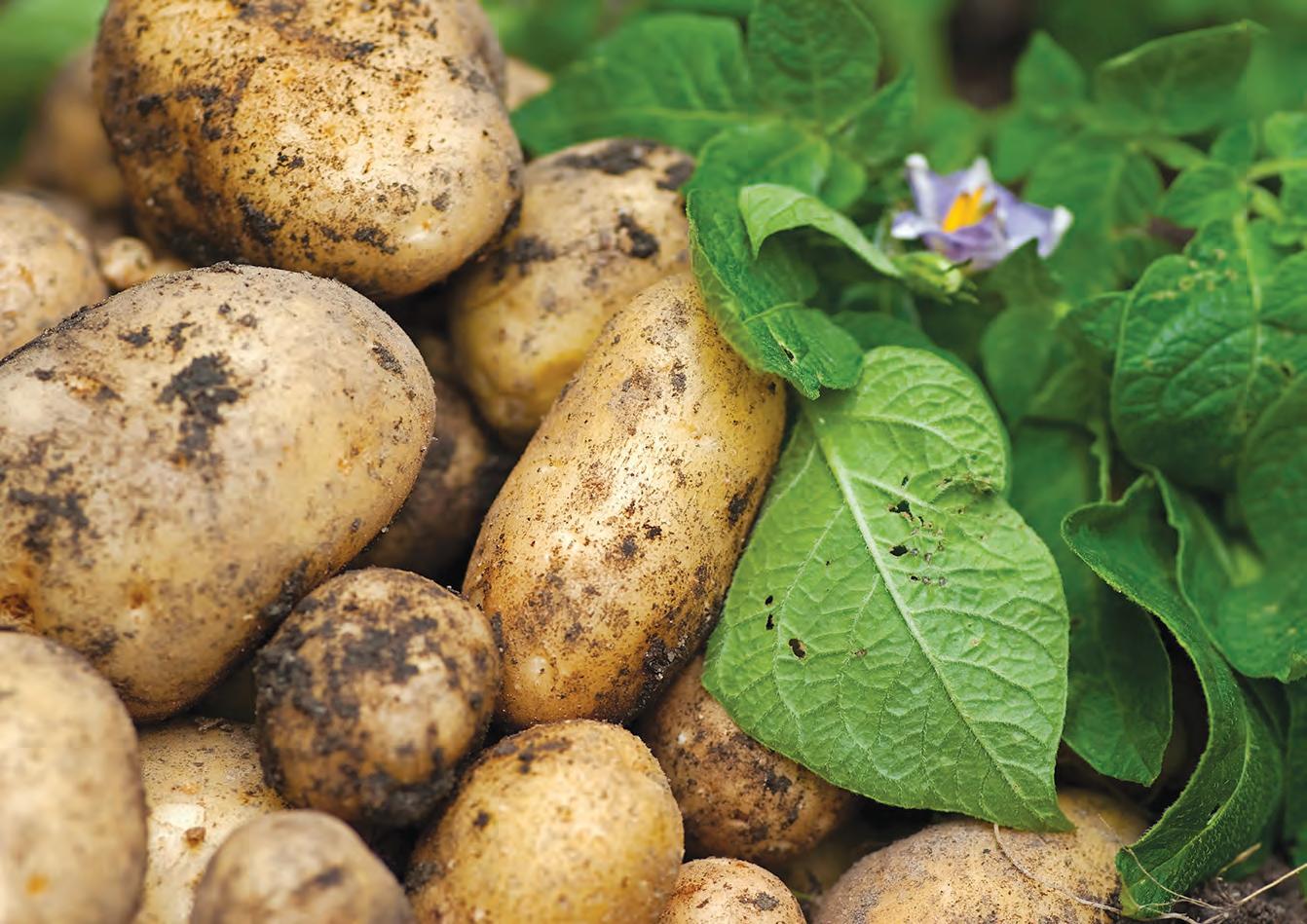
In its annual report, PNZ explains that the sustainability challenges for industry include:
- how to remain viable during the rollout of government policies.
- adapting to climatic changes and mitigating impacts from extreme weather events.
- managing pests and disease; all whilst maintaining economic vigour.






“Most farmers are aware of the challenges on their own farms, as
PNZ officials visited Pukekohe, Canterbury and Palmerston North throughout the year, to ensure they stayed abreast of current challenges and heard directly from potato growers.
“Although the pandemic resulted in a cancelled biennial conference, we continued stakeholder engagement, with smaller regional events to update industry on our activities.”
PNZ says the solutions to industry challenges are being sought in research and development programme.
The NZ Potato Growers’ Levy is only spent on research, development, and extension (RD&E) activities, as directed by growers at the time of the last levy vote in 2019. Last year $1.9 million was spent on RD&E and there are currently seven projects on the go.
The two biggest projects are the Canterbury Potato Liberibacter Initiative (CPLI) and the Sustainable Vegetable Systems Programme (SVS).
Both projects look at sustainable quality and environmental sustainability.
The new CPLI programme, launched in November 2021, extends on the previous work of Plant and Food Research Institute’s psyllid projects and is led by the newly formed Canterbury Psyllid Liberibacter Initiative (CPLI).
CPLI is a collective of like-minded farmers and industry representatives wanting to combat the devastating impact of the Liberibacter (Lso) bacterium which causes Zebra-chip in potato crops.
CPLI is funded with a special Canterbury grower/processor levy and in-kind support from PNZ. Research from the programme will be shared with the whole of industry. The work is being undertaken both at Plant and Food Research (PFR) and by Lincoln University Masters students, on growers’ properties.
PNZ says this all builds on the previous projects which examined spray programme, day degree monitoring and psyllid behavioural research.
ONION PRICE LEAVES CONSUMERS TEARY EYED
sudeshk@ruralnews.co.nz
A TOUGH onion growing season in New Zealand is causing ripples both here and abroad.
Onion prices have soared on the back of a low yield and the increased price of fertiliser and diesel.
In New Zealand, the humble brown onion has gone up 200%, and red onion is even more expensive.
Onions New Zealand chief executive James Kuperus told journalists last month that a tough
growing season has contributed to the high price of onions.
“It was very dry last December and January, which has led to a decrease in yield.”
Supply is tight as New Zealand is at the end of last season’s crop and the new season’s crop is about to be harvested, he added.
A decreased yield means onions cost about 72 cents a kilo more than at this time last year, Kuperus said. Other costs had also gone up and some of this has been passed on.
“We’ve had fertiliser prices go up from around
The SVS is in its third year and is making progress towards improving tools and guidelines for the New Zealand vegetable sector’s nitrogen management, according to PNZ.
SVS is funded by Ministry for Primary Industries, led and co-funded by PNZ in collaboration with the Vegetable Research & Innovation Board and Horticulture NZ. SVS is a $7.5 million-dollar national project, spread over 4 years and has multiple workstreams.
“The programme outputs include providing analysed trial results and subsequent modelling of the vegetable nitrogen system,” says PNZ.
“This is presented as nitrogen budgets. Plant and Food Research Institute are conducting the field, laboratory and modelling research. Trials and monitoring take place both at PFR and on growers’ properties.”
The SVS programme aims to maintain the vegetable and potato industries’ social license to operate.
$900 a tonne to $2,000, so that’s doubled; we’ve had agri-chemicals go up in price,” he added. “Diesel has gone up from 80 cents a litre to around $2 a litre over three years – so these increased inputs are double, sometimes nearly triple.”
Meanwhile in Fiji, the new Coalition Government had to address soaring onion prices during its first week in office.
The Consumer Council of Fiji has assured consumers that the shortage of onions and its sudden hike in price is a temporary issue.
The council says upon liaising with several traders and wholesalers, they have been informed that it is a seasonal issue whereby there is a shortage of onions in New Zealand.
It added, as a result certain traders are importing onions from the United States to meet the local demand.
Fiji’s new Minister for External Trade and Co-operatives, Manoa Kamikamica, says due to a challenging growing season in New Zealand, supermarkets in Fiji have consequently experienced a shortage of supply of onions.
3 HORTNEWS JANUARY 2023
Potatoes New Zealand annual report says the overall value of the industry including the domestic and export markets was $1.095 billion.
Sudesh Kissun
Available at your local FELCO Stockist. Heiniger is the exclusive FELCO distributor and authorised service centre in NZ - contact us to find a FELCO dealer near you. (03) 349 8282 | heiniger.co.nz Swiss precision. Made to last. FELCO 211 LOPPERS The perfect balance of power and manoeuvrability. The FELCO 211 range feature lightweight aluminium handles for comfortable cutting and curved cutting heads to pull in and easily slice through branches FELCO POWER TOOLS Power through even the biggest jobs with ease. Designed to act as an extension of your body, the new FELCO Power Blade series feature lightweight, ergonomic handles for comfortable pruning all day long. NEW
Sudesh Kissun
Rain puts a damper on this year’s Christmas berry harvest
Nigel Malthus
A BIG December wet spell threw a spanner in the works for Canterbury berry growers during the vital pre-Christmas trade.
Raspberry grower Ian Johnston of Pataka Berries, near Belfast, said he had fruit that was “looking magnificent” when he opened for the popular pick-your-own trade a week before Christmas. He sold 200kg on the first day. Then he had to close for three days of rain, some of it extremely heavy.

“The weather’s just gone absolutely totally against us. As it did last year,” he told Hort News Along with outdoor tomatoes, Pataka grows raspberries for both fresh and frozen sale, with the pick-your-own fresh trade accounting for about 40% of the crop.
Johnston says the raspberries could handle a day of rain in isolation because they would be able to dry out. But ripe fruit won’t survive being wet for longer than that.
“The fruit’s gone mushy. It’s not a pleasant experience. The fruit won’t keep – it’ll mush when you pick it,” he explained. “It’s going to cost us an awful lot in fruit. It’s costing us a lot of actual money today and then it’ll cost us in money down the track when we don’t have the fruit in the freezer to sell.”
However, Johnston remained optimistic of good sales, and the day after Hort News visited, blue skies allowed him to announce on the Pataka Facebook page that it was again open for public picking.
The rain was also a problem for Norm and Jane Mundy who grow mainly strawberries,
SUMMERFRUIT SEASON STARTS WELL
THE SUMMERFRUIT season has started well with plenty of high-quality fruit available and a workforce to pick it, according to Summerfruit NZ.
Chief executive Kate Hellstrom says cherry, nectarine, peach and other summerfruit growers are reporting a positive start to the 2022-2023 season.
“Fruit quality is good plus there are more people than last year available to pick the fruit,” she says.
“This is due to the attraction and retention campaigns that the industry has been running
for the past few years, and the fact it is easier to enter New Zealand now our borders have been freed up.”
Hellstrom adds that having enough people to pick and pack is vital.
blackberries, potatoes and pumpkins for local markets on a 10ha block, just south of the Waimakariri River.
Pioneers of wine-making in Canterbury, the now semi-retired couple were co-founders of the once-celebrated St Helena Winery, and their berry block is carved off what was the original vineyard.
Their strawberries are hydroponically grown in waist-high troughs.
“We used to grow them on the ground, but that was a nightmare,” Jane Mundy explained.
“You lose too many. Especially in years like this,” added Norm. “Anything that’s not covered, if it rains for more than half a day or so, it damages them. They go white on the tips where the water’s been sitting and botrytis sets in. Then they’re unsalable.”
However, the couple say 2021 was much worse when they lost a large portion of their crop. They have since added plastic rain covers to several of the rows and plan to extend that protection across the plot.
Meanwhile, orchardist Paul Tapper, who grows a large variety of fruit on a block at Swannanoa, said his problem was his cherries in what was “a frustrating season so far”.
In most years, the main problem was protecting them from spring frosts, Tapper told Hort News
“Then the last three years we’ve had this confounded weather leading into Christmas that is decimating the cherries,” he added.
“We normally get one wet day in fourteen, not 14 wet days in 15. It’s causing huge damage to the cherries and it shortens the crop.”
up of young and older New Zealanders, as well as Working Holiday Visa scheme holders and workers from the Pacific.
“It is heartening that things are looking more positive for this season. Now all we need is the weather to play ball and there to be no bad weather events like hail over the next few weeks.”
In early 2020, the Otago export cherry crop was badly affected by rain and cold temperatures.
Summerfruit export volumes are expected to be higher than last year, but this will be subject to a number of factors – especially the weather.
4 HORTNEWS JANUARY 2023
“There is nothing worse for a grower than fruit being left on trees and going to waste, which is the situation some of our growers have been in, in recent years.”
She says the summerfruit workforce is made
Canterbury raspberry grower Ian Johnston says untimely rain prior to Christmas cost him a lot of money.
“It is heartening that things are looking more positive for this season. Now all we need is the weather to play ball and there to be no bad weather events like hail over the next few weeks.”
Under cover crops the future?
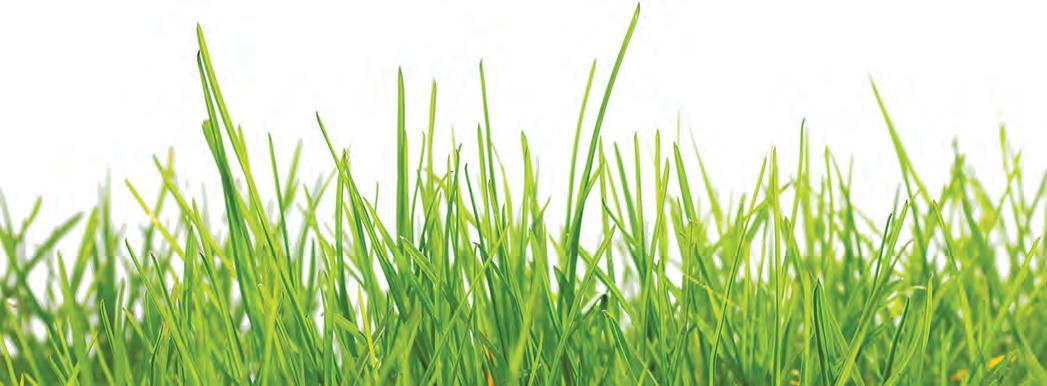 Peter Burke peterb@ruralnews.co.nz
Peter Burke peterb@ruralnews.co.nz

HORTNZ CHAIR Barry O’Neil believes there is a huge opportunity for growing vegetable crops under cover –similar to what the large, commercial grower Leaderbrand is doing in Gisborne.
Leaderbrand is in the final stage of constructing a 10 hectare structure, which provides cover for many of the crops it grows.
O’Neil’s comments come in the light of what has been a terrible season for the horticulture sector with seemingly unending rain, followed by a catastrophic frost, all of which has severely damaged – and in some
cases wiped out – entire kiwifruit orchards.
He told Hort News the extremely wet weather has meant that many growers haven’t been able to get into their orchards or vegetable plots and plant crops. O’Neil describes a situation up in Northland where growers couldn’t plant their kumaras because the ground was so wet and this is likely to have a significant impact on that industry.
“While we do have cyclical weather events, this season has been one of the worst if not the worst that I can recall since 1984 when I started growing kiwifruit,” he told Hort News. “I have seen the industry go through
its ups and downs, but this season’s the weather has been exceptionally, unbelievable bad.”
O’Neil adds that in the light of the climatic disasters, growers are now spending a lot more time when they are setting up their orchards. For example, he says they are establishing their drainage systems to take higher volumes of water and to ensure shelter, be that artificial or natural, is better.
“By growing crops undercover, growers can mitigate some of the risks of planting crops in the open ground when weather systems like the ones we have been experiencing strike,” he explains. “Growers
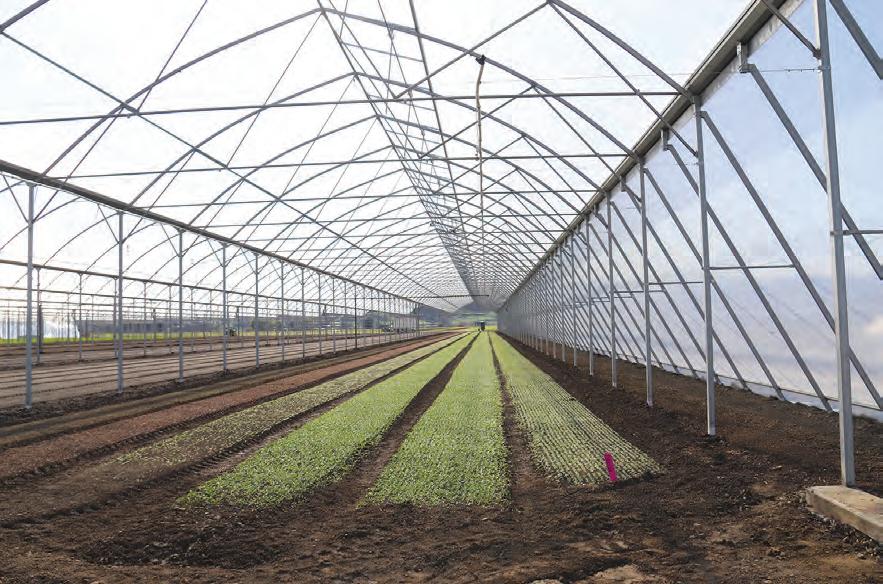
5 HORTNEWS JANUARY 2023
who plant undercover are effectively
future-proofing food security and ensuring that there is a continuous supply of fresh health vegetables for the consumer.”
Leaderbrand is in the final stage of constructing a 10 hectare structure, which provides cover for many of the crops it grows.
RURAL NEWS TO ALL FARMERS, FOR ALL FARMERS Delivering to your mailbox for over 30 years www.ruralnews.co.nz
The Kiwifruit hotel

Michael Franks describes himself as effectively running a company that is a 'hotel for kiwifruit'. His customers are kiwifruit: green, gold and red. Franks is chief executive of Seeka - a company which handles about 25% of the total NZ kiwifruit crop plus other fruits such as citrus, avocados, persimmons and kiwiberries. Peter Burke recently caught up with him at Seeka360 the company's Te Puke headquarters.
THE BUILDING which houses up to 80 permanent staff that Seeka employs is circular, just like a kiwifruit.
It is exceptionally well laid out and divided into pods housing the different sections of
the business. Situated just out of Te Puke and surrounded, not unexpectedly, by kiwifruit vines, it displays a beautiful Māori carving depicting the process of growing, cultivating and harvesting produce by the
people of the regions that the company operates in.
It has a staff cafeteria that many would die for and a gymnasium is tucked away near the main building.
Seeka HQ is impressive, but not ostentatious.
The company has gymnasiums at a number of its operating sites, reflecting the focus on people and understanding that Seeka people work hard through the various harvests they tackle.
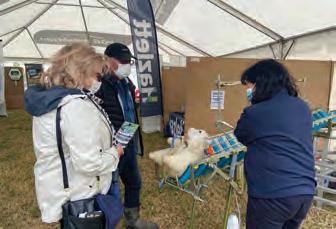
As for Franks, he’s not afraid to express a direct view on any given subject. He’s an accountant by background and started life working for Fletcher Paper, then Norske Skog before taking up the role as chief financial

officer at Seeka. It’s a career path that largely came by accident as he originally didn’t apply to work at the company as his friends had, but when he heard that they had missed out, he decided at the last moment to throw
his hat into the ring and got the job in 2006.
Seeka began life in the 1980s when a group of local kiwifruit growers led by Warner Bowyer got together with a view to making more money in the industry, and so
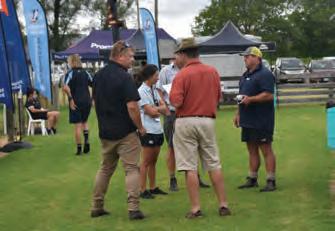

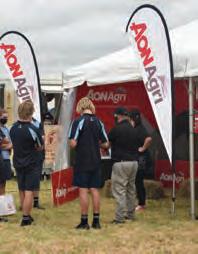


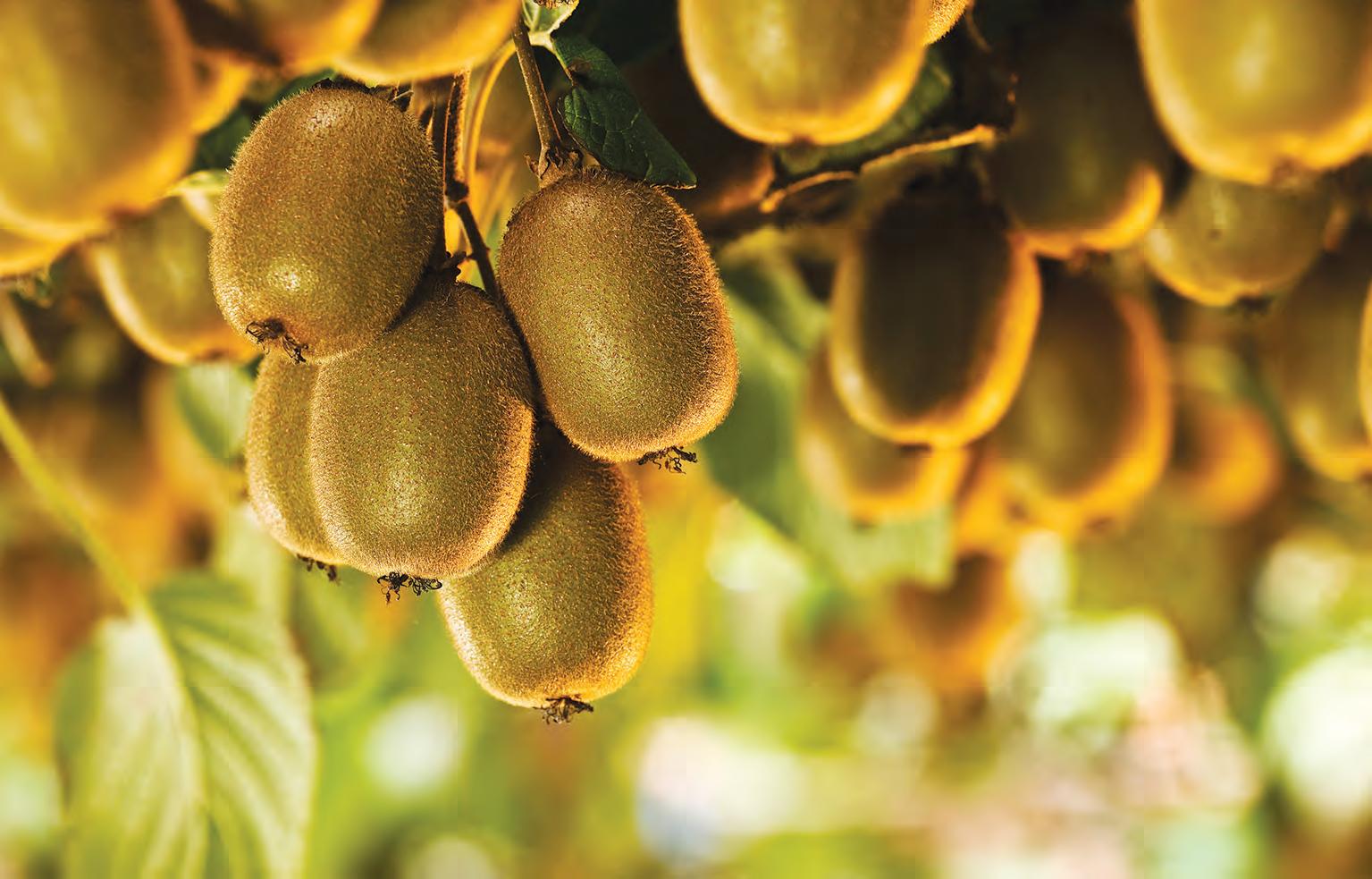
6 HORTNEWS JANUARY 2023
22-23 February 2023 Wairoa A&P Showgrounds eastcoastexpo.co.nz Two days of exhibits, demonstrations & seminars for East Coast sheep & beef farmers East Coast Farming Expo Connecting East Coast Farmers
Seeka handles about 25% of the total NZ kiwifruit crop.
manager
Seeka as we know it today was formed. Franks says the road to success was pretty rocky.
“Some of the originals had to mortgage their houses without their then wives knowing to keep the company afloat. Then they decided they would buy the kiwifruit investments from Brierley, but they didn’t have any money so they went around Te Puke and raised the money needed to make the purchase.
“Today the company earns around $300
million in revenue and is now a reasonably-sized operator in the produce industry in both NZ and Australia,” he says.
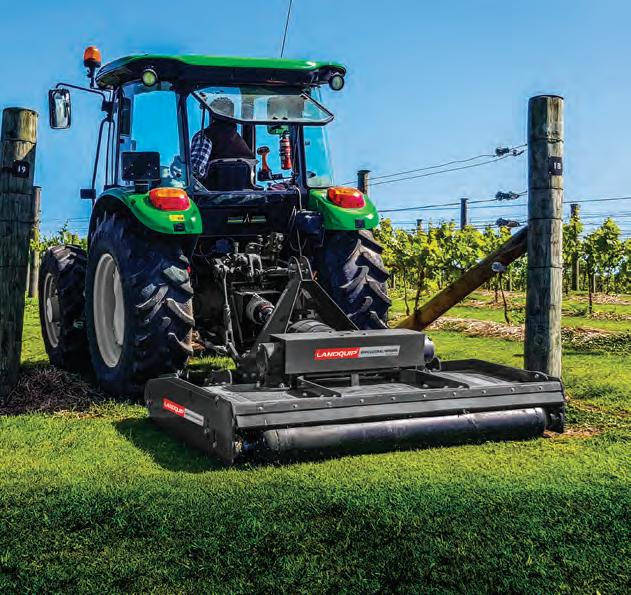
Franks told Hort News that Seeka is an integrated produce business focused on kiwifruit. It is a large regional employer and with interests in orchards from Northland to the Bay of Plenty, around the East Coast and down to Gisborne. He says its business is mainly kiwifruit but it is also involved in the production of avocados,

kiwiberries and some citrus in Northland and Gisborne.
“We have an interest in about 2,000 hectares of orchards, but we own very little of the land,” Franks explains. “We have a network of orchard managers, we do long term leases of orchards, we build orchards and sometimes we have an equity stake in them. We do orchard developments with private people and sometimes just provide orchard management services.”
MORE THAN A FRUIT GROWER
SEEKA IS also big in the post-harvest side of the business.
The company has interests in 11 packhouses – two in Northland, one in the Coromandel, two around Katikati, one at Mt Maunganui, three in Te Puke, one in Opotiki and one in Gisborne.

Franks says while kiwifruit is the main product going through the packhouse they also put though citrus, avocados, kiwiberries and persimmons.
“Effectively we are running a hotel for kiwifruit. We own many but not all of the packhouses – some we lease. At the height of season we employ about 4,500 seasonal staff,” he explains.
Another part of the business is providing the market with all the fruit that doesn’t get supplied to Zespri. Seeka will handle local market kiwifruit along with other fruit including apples, avocados and citrus – supplying it to supermarkets and other traders mainly in the Auckland region.
Franks says they also import pineapples, bananas, pears, citrus, tomatoes and papaya. We provide a packing service to citrus and avocado marketers and growers, as well as packing for ourselves.
Seeka also has a business operation across the Tasman at Shepparton in Northern Victoria, where the company has invested in a kiwifruit orchard. Here they also grow European pears, plums, Asian dates and nashi pears.
Back home, they produce some consumer products
namely ‘kiwi crush’ and also avocado oil. Seeka also contracts its services to other players in the produce industry.
There are new challenges coming out of the woodwork on a daily basis. But as a long-time professional in the industry, Franks is constantly on the lookout for ways
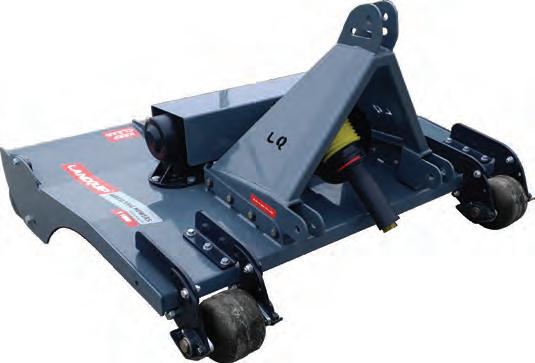
of improving the profitability of the fruit sector and the returns to growers.
The kiwifruit hotel is always busy although – unlike the NZ tourist industry – occupancy tends to peak in the winter months. It never stops and is driven by innovation and smart management and hard work.
7 HORTNEWS JANUARY 2023
Michael Franks chief executive of Seeka is not afraid to express a direct view on any given subject.
Seeka360 the company’s Te Puke headquarters is circular –just like a kiwifruit.
sales@landquip.co.nz 0800 269 776
landquip.co.nz
Designed and made in NZ, The new Landquip vineyard and orchard mowers are here!
Boosting Taranaki’s horticulture
VENTURE TARANAKI/ TE PUNA Umanga’s Branching Out project aims to address both environmental concerns and changing consumer demands, by identifying and facilitating opportunities for the food and fibre sector in Taranaki.


Since 2020, the project has been working to pick some high-value winners for the region. It will now be concentrating on six specific areas for further research as it enters Phase Two of the project. These are: hemp fibre for construction, medicinal ingredients, indigenous ingredients, hops, gin botanicals, and highvalue food crops suitable for inclusion in a standard
crop rotation.
The work will be funded by a $975,000 grant from MPI’s Sustainable Food and Fibre Futures Fund announced late last year by Agriculture Minister Damien O’Connor. The







and research institutes.
“In phase two, we will continue to take a full value chain approach to the new ventures we’re progressing,” Michelle Bauer, Branching Out project lead, explains. “We will develop industry

project has also secured $1.2 million of funding from various local sources, councils and in-kind contributions from industry, growers,



strategies for each opportunity, delivering clear models for the investment required to help provide these new industries a



8 HORTNEWS JANUARY 2023
clear path to
An ambitious project that aims to make Taranaki a horticultural powerhouse has received a major boost with the announcement of a $975,000 grant from the Ministry for Primary Industries.
Nigel Malthus reports...
Michelle Bauer, Branching Out Project Lead
SUPPLIED
“We will develop industry strategies for each opportunity, delivering clear models for the investment required to help provide these new industries a clear path to success in Taranaki.”
WHAT ARE THE OPTIONS?
PLANT AND Food Research Principal Scientist Dr Brent Clothier says climate change may make Taranaki increasingly viable for crops like kiwifruit.
Clothier is the author of the 2020 Taranaki Land and Climate Assessment, which took in data from a variety of sources to assess the region for factors including winter chill, Growing Degree Days (GDD10), and FrostFree Period (FFP). Flowering plants generally require some period of winter chill to induce spring flowering. However, Clothier told Hort News that Northland is already losing some of the winter chill needed by kiwifruit vines.
success in Taranaki.”
Bauer says the initiative goes beyond land use and also looking at how to add value and deliver the greatest returns – as well as enable sustainability and develop the industry strategies that give the ventures the greatest chance of success.
The work builds on a Plant and Food Research study in 2020 that found that 207,000ha (nearly 30%) of the Taranaki region’s total 724,000ha could potentially be suitable for horticulture. That study looked at a more traditional range of horticultural crops

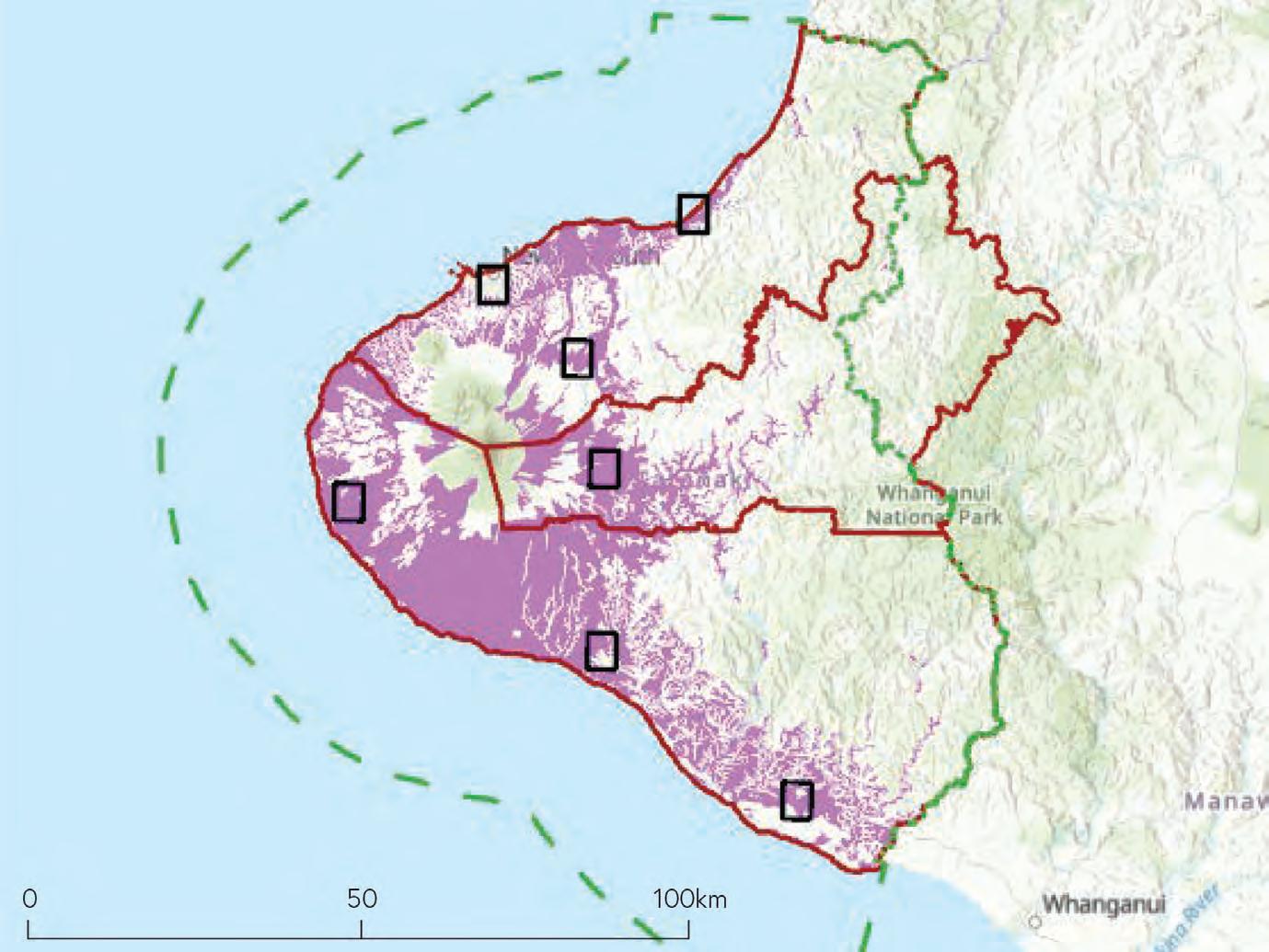
including kiwifruit and avocados.
The study, commissioned by Venture Taranaki, as part of its Branching Out initiative, found that nearly 30% of the region could potentially be used for horticulture, although it identified some challenges for some specific crops.
The summarised findings were:
• APPLES: Requirements for winter chill and GDD10 are consistently met throughout the region for mid-season varieties.
• AVOCADOS: The report notes that avocados are sensitive to spring temperatures, with mean minimum spring
market.
“That work was done very much in the early stages of the project and has been very helpful in terms of giving us a steer,” Bauer adds. “But we needed to look not just at what could grow in Taranaki, and also the market and value added opportunities as well as the existing capabilities, knowledge and infrastructure that might already exist in the region.”
She says kiwifruit and avocados are “still on the long list” but those crops are already growing in the region and already have established paths to
“At the end of the day, the short list ventures are those in which further market work needs to be undertaken.“
Venture Taranaki’s director of sector partnerships, Anne Probert, said the project aimed to give life to the investment opportunities by taking the ideas from paper to tangible, on-theground initiatives.
“Through Branching Out’s activities, we aim to create 50 new jobs, plant 650 hectares of novel crops, develop new enterprises, and attract $8 million of new revenue or investment to our region by 2025.”
temperatures that are “sufficient, yet less than ideal” met in certain areas.
• BLUEBERRIES: Varieties with low and medium winter chill requirements would be suitable throughout Taranaki.
• HOPS, HEMP AND CBD CANNABIS: The report considered these together since they are closely related and their needs would be similar. The main driver of growth is summer day length and that is met across the region.
• HAZELNUTS AND WALNUTS: GDD10 requirements are easily met across Taranaki as both nuts require significant
winter chilling.
• KIWIFRUIT: Winter chill requirements are generally met across the region.
• POTATOES: The report says a spread in potato growing rotations is possiblefirst bounded by the soil temperature required for sowing (15°C, met at the end of August) and the latest bound being the accumulated GDD10 required for tuber maturation.
• WINE GRAPES: GDD10 requirements are generally met – but the report found that the whole region is probably too wet for grapes.
9 HORTNEWS JANUARY 2023
The area in purple is the 207,000ha of Taranaki deemed potentially usable for horticulture.
Supplied by Plant And Food Research.
T&G and NZ Super Fund further extend partnership
T&G GLOBAL and the New Zealand Superannuation Fund further extended their partnership in late December with the sale of T&G’s Riwaka orchard in Nelson, to the fund’s rural investment manager FarmRight.
The sale saw T&G sell its 194 hectare Riwaka orchard, which currently has 33ha planted in the Envy apple variety. T&G will continue to run the site until 31 May 2023, at which time FarmRight will take over full operations of the orchard when T&G’s permanent Riwaka team members will join FarmRight.
T&G Global chief executive Gareth Edgecombe says the sale builds on the strong partnership formed with the NZ Super Fund and will help further fuel T&G’s growth strategy.
“Over the past two years, we’ve developed a strong partnership with the NZ Super Fund, which is built off our shared growth strategies and the opportunity we see for New Zealand’s horticulture sector to generate long-term
returns for the benefit of all,” he explained. “In purchasing our Riwaka orchard, the NZ Super Fund plans to further redevelop and invest in the site, including planting additional Envy trees.”
Edgecombe says these plantings will contribute to the 200ha of new premium Envy plantings T&G have planned for the Nelson region and help it meet growing global demand for the brand.
“In the 14 years since we first released Envy to local growers, we’ve developed it into a brand which customers and consumers around the world trust and seek out,” he added. “It’s on track to be a billion-dollar brand, with strong performance in key growth markets across Asia and North America.”
Edgecombe says with projected consumer demand requiring an additional 600 million apples by 2030 (an additional 8 million tray carton equivalents), the company is re-developing and re-planting its own T&G orchards, as well as partnering with
independent growers, iwi and investors, including the NZ Super Fund, to increase supply through new plantings.
“We look forward to continuing to work closely with FarmRight and the NZ Super Fund team in helping build a strong, sustainable and value-creating horticultural sector for Aotearoa New Zealand.”
FarmRight chief executive Jim Lee says its investment plans for Riwaka will further strengthen the company’s footprint in the Nelson region, with the proceeds helping fund the superannuation of Kiwis into the future.
“In the Nelson region, we already have a strong presence in the primary sector, with apple orchards and hops gardens. The acquisition of T&G’s Riwaka orchard provides us with a further significant horticultural asset to invest in and grow.”
This is the NZ Super Funds’ third partnership with T&G, having previously acquired 80 hectares of orchards in Hawke’s Bay.
NEW APPLE BOARD DIRECTORS
NZ APPLES and Pears (NZAPI) appointed two new directors to its board in late December.
Craig Betty replaces Peter LandonLane who is stepping down in early 2023. He will serve as a director for the remaining term of Landon-Lane’s tenure, which ends in August 2023 and
he will be eligible for re-election to the board at that time.
Betty leads T&G’s growing operations for apples and berries, including operational R&D, postharvest and supply chain operations and has global accountability for continuous improvement and quality
standards and frameworks. He was previously chief operating officer for Westland Milk Products and general manager operations for Fonterra.
Meanwhile, economist Cameron Bagrie was also appointed to the board as the second independent director. NZAPI says a decision was made some
time ago to use this appointment to widen the skill base of the board.
Bagrie is the managing director of Bagrie Economics and a regular economic commentator. He was formerly chief economist of ANZ and is a board member of Te Waka – Waikato Economic Development

Agency, and Life Education New Zealand.
The two new directors join Cameron Taylor, Jackie van der Voort, John Allen, Lesley Wilson, Catherine Wedd and Evan Heywood on the board, along with independent director and board chairman, Richard Punter.
10 HORTNEWS JANUARY 2023
T&G Global chief executive Gareth Edgecombe says the company has developed a strong partnership with the NZ Super Fund.
Registration is FREE! KEEP UP-TO-DATE WITH OUR WEEKLY NEWSLETTER. NEVER MISS A STORY FACEBOOK.COM/RURALNEWSTWITTER.COM/RURAL_NEWS www.ruralnews.co.nz/enewsletter
Land Pride’s small tiller range
Daniel markd@ruralnews.co.nz
KUBOTA NEW Zealand has launched the Land Pride Rotary Tiller range.
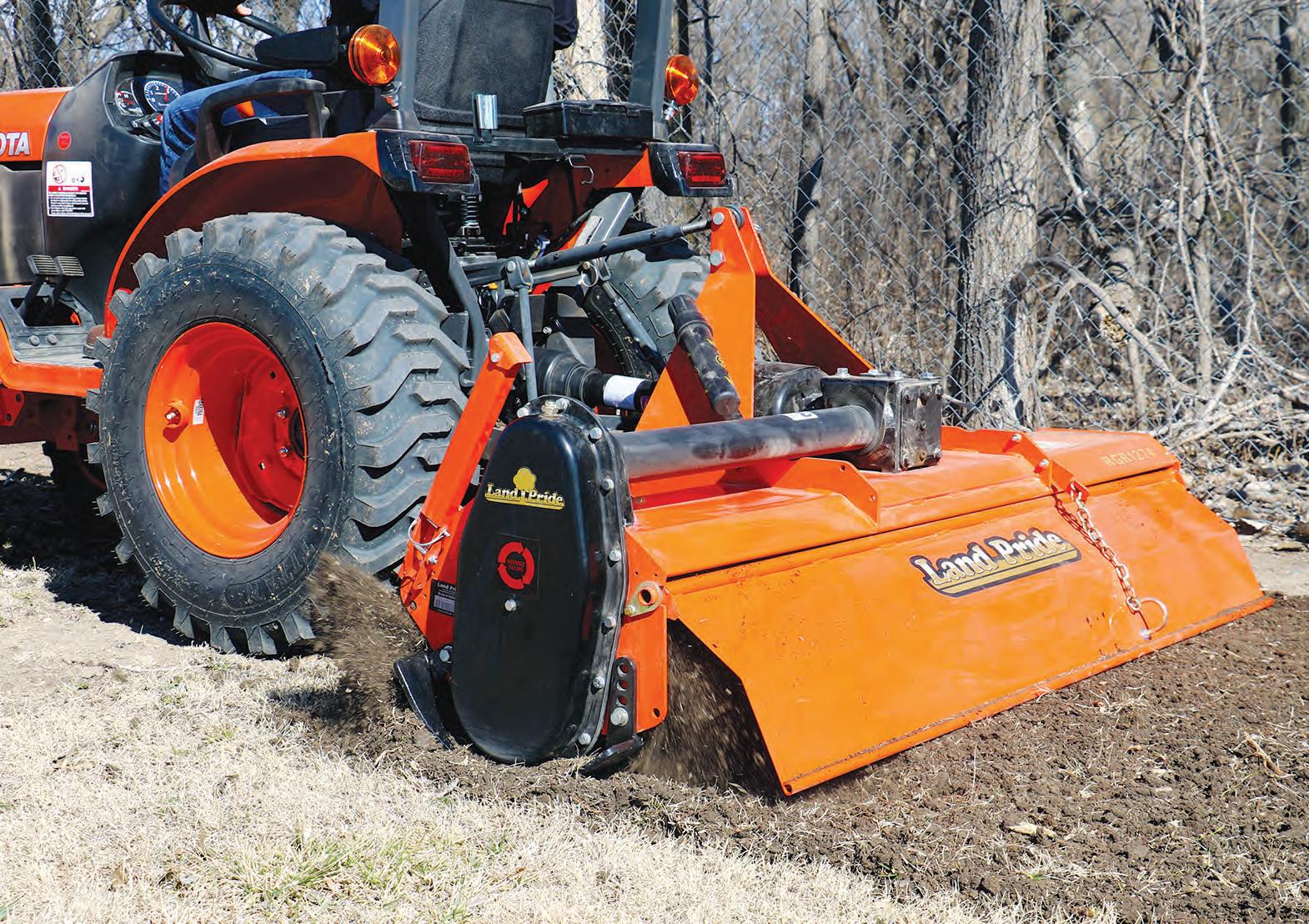
This broadens its product offering in the lifestyle farming and garden maintenance space.
The Land Pride RT12 range covers working widths from 1.1 to 2.1 metres, with a 60-horsepower gearbox rating. The range is offered with the unique option of a conventional forward rotating rotor or reverse rotating rotor.
“With a reverse rotating rotor, the tines rotate in the opposite direction to conventional tillers, pulling the tiller into the soil more effectively, particularly in hard conditions,” explains Kubota Australia product manager for Land Pride, John
Moloney.
“This helps bury residues more effectively and tills more intensively, resulting in a high-quality seedbed.”
The offset capabilities allow the tiller to work closer to objects such as fence lines, buildings or trees. Meanwhile, tilling depth is maintained with the adjustable skids at each side of the machine.
The new range is compatible with the Land Pride QH Series Quick Hitch, allowing operators to quickly connect and disconnect between implements – a time saver when working on multiple projects.
An extensive warranty offers a 3-year protection on the main gearbox. This is complemented by 10-year coverage of the chain and sprocket assembly housed in the side transmission.
Check out our websites

BREAKING NEWS MANAGEMENT STORIES MARKETS & TRENDS
MACHINERY REVIEWS COMPETITIONS AND MUCH MORE...

11 HORTNEWS JANUARY 2023 www.ruralnews.co.nz
The Land Pride RT12 range covers working widths from 1.1 to 2.1 metres, with a 60-horsepower gearbox rating.
Mark
NZ tech helps growers

AN ONLINE platform available to New Zealand orchardists through their industry bodies has the potential to lift productivity and save growers thousands of dollars in lost crops.
That’s according to Central Otago orchard manager Pete Bennie, who uses the MetWatch platform multiple times a day to improve the way he manages the Leaning Rock Cherries orchard near Alexandra. The orchard includes 50 hectares planted in cherries, apples, apricots, peaches and nectarines. It has steadily grown in the time Bennie has run it.
He puts part of Leaning Rock’s success down to the MetWatch platform, which provides access to a swathe of data that supports his daily decision making.
Bennie accesses the platform through his membership of New Zealand
Apples & Pears and Summerfruit New Zealand – viewing different fruitspecific forecasts and disease models through each organisation’s online portal.
“I’m using it regularly at the start of every apple growing season looking at the probability of frost,” he says. “And then as we get into November and December, I’m using it to understand disease threat, rainfall and when I need to irrigate.”
Developed by New Zealand agritech company Hortplus, MetWatch draws on a network of weather stations around the country to provide accurate weather forecasting and help growers understand trends and manage risks posed by pests and diseases.
It combines real-time environmental data from the weather stations with pest and disease models developed by some of



New Zealand’s leading researchers to provide user-friendly insights that help orchardists and agronomists make smart science-based decisions.
Bennie says the portal is a valuable tool, which he logs in up to three times a day from the office or while in the field. He says the insights it provides have saved him a significant amount of
money through reduced crop losses, and as a result of better-informed decisions about when to bring in a helicopter as a frost control measure or for cherry drying.
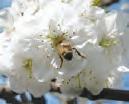
“Helicopters are effective for frost control or drying cherries but they cost a bit so you need to be sure before you use one.”
With summer, the



warmer weather can cause reduced productivity and disease. This is particularly true during a Central Otago summer, when water management becomes critical.
Bennie reckons tools like the portal can give orchardists an edge. He says the result is more fruit, healthier fruit, and less lost fruit – all of which add to profitability.

KEEPING DISEASES AT BAY
METWATCH’S OTHER handy grower tools are its disease models.
These include botrytis, leaf rust, brown rot on the Summerfruit New Zealand Weather and Disease portal, and black spot and many others on the New Zealand Apples & Pears Weather and Disease Portal.
“The black spot model – that’s gold. If the portal says the risk level is high,” Bennie explains. “I know I need to consider spraying lime sulphur or using overhead sprinklers.”
MetWatch was first made available to the apple and pear industry in 2010 and the summerfruit industry in 2019. The MetWatch platform is also available through industry bodies for arable crops, kiwifruit and onions – with different tools and crop-specific pest and disease models for each. It is not only used by growers, but also by researchers and agronomists for more advanced modelling and data insight.

Apple and pear growers can access it through an online portal available to members of New Zealand Apples & Pears, while growers of summerfruit can access it through an online portal available to members of Summerfruit New Zealand.
Growers in other industries may access MetWatch either through a corporate account, or via online portals made available by their industry association, enabling industry-specific tools and models.

12 HORTNEWS JANUARY 2023
Central Otago orchard manager Pete Bennie uses the MetWatch platform multiple times a day.
HORTNEWS Introducing Hort News, a national publication serving the needs of our booming horticulture sector. Distributed with the leading national farming publication Rural News, Hort News will be delivered to all key horticulture regions nationwide. It is the complete solution for readers and advertisers, covering every aspect of the wider horticulture industry – news, agribusiness, management, markets, machinery and technology. Contact: STEPHEN POLLARD Auckland Sales Representative Ph 021 963 166 LISA WISE Waikato Sales Representative Ph 027 369 9218 RON MACKAY Wellington Sales Representative Ph 021 453 914 KAYE SUTHERLAND Christchurch Sales Representative Ph 021 221 1994 RURAL NEWS TO ALL FARMERS, FOR ALL FARMERS Publishers of • It’s the one-stop way to reach the horticultural sector • News and information for all types of growers • 10,000 nationwide distribution • Sent out with the trusted and established publication Rural News HORTNEWS NOVEMBER 2021 ISSUE 19 ISSN 2624-3490 (print) ISSN 2624-3504 (online) WWW.HORTNEWS.CO.NZ Bumper cherry –predictedcrop Page 7 Sweet result for hort! SOME HORTICULTURE farmers are also bracing for financial relief from the proposed free trade agreement between New Zealand and the United Kingdom. Apple, pear and onion growers are among those set to benefit although notasbigmajormeatanddairyexportAlanNZApplesandPearschiefexecutive PollardsaysatthemomenttheUK is a $100 million market for growers, consistently ranking in the top two or three. “We have a quota between August and December where volume above that quota attracts an 8% tariff,” he told Hort News Under the proposed FTA, the tariff on pears will be removed on day one, with the tariff on apples reducing over three years “So, there is some financial relief andwebenefitfromamorewelcoming regulatory environment,” says Pollard. Onion growers will face zero tariff from day one. The tariff on New Zea- land onions is currently 8%. New Zealand currently exports $11 million worth of onions to the United King- domOnionsannually. NZ chief executive James Kuperus says the FTA will ensure that this country’s onion exports continue to grow as the world comes to terms with Covid. “Trade and exporting ben- efits a diverse range of New Zealand businesses,” he says. “Without clear trading arrange- ments, improved market access and reduced tariffs, it is extremely difficult totoexportfromthebottomoftheworld larger economies like the United Kingdom. “Of immediate benefit to the onion sectoristheexpectationoftariffsbeing eliminated on onions, once the agree- ment comes into force.” The New Zealand Government announced the details of an “in-prin- ciple” New Zealand-UK FTA last week as trade officials neared completing the deal after little more than a year of negotiations. Kuperus says the NZ onion sector is extremely grateful for the hard work of New Zealand’s negotiatorsanddiplomatswhohaveworked tirelessly to conclude this agreement. “The New Zealand team has had toatjoinZoomcallswiththeircounterparts night,extremelyinconvenienttimesofthe for example.” The conclusion of this agreement willbenefitoniongrowersandregional communities, from Pukekohe to Can- terbury. Onions are an important rota- tion crop for many vegetable growers. Having onions in a rotation allows growers to rotate between other crops such as lettuces, potatoes, carrots etc, which helps to control pests and diseases. In 2019, the NewZealandonionindustrywasworth $200 million back to the grower, 85% of which came from exports. MeandealwhileApicultureNewZealandsaysthe industrywillbeagreatoutcomeforthebee andwillimprovecompetitivenessinoneoftheirlargestexportmarkets. The UK consistently ranks as one of top three export markets for New Zealand honey and is worth $70 mil- lion annually. “We have strong ties with UK customers, with a long his- tory of exporting high-quality honey products there. However, the current in-quota tariff rate of 16 per cent hasbeenasignificantbarriertotrade,”says KarinKos,chiefexecutiveofApiculture New Zealand. Sudesh Kissun sudeshk@ruralnews.co.nz GETTING READY! MANGAWEKAASPARAGUSmanager SamRaineyoverseesan80hectare asparagusinthecentralNorthIsland. WhenHortNewsvisitedtheproperty inlateSeptember,Raineyandhisstaff wereinthefinalstagesofpreparing fortheharvest.Thepackhousewas beingsetupandatthesametimethe firstspearsofasparaguswerestarting toappear.Whilethetotalsizeofthe propertyis80hectares,theywillpick just65hectaresthisseason–which equatestoupto250tonnes. Seestorypages4and5. Replacement Spray Pumps & Spray Kits Webbline Agriculture is a direct importer/reseller of a full range of pumps from market-leading manufacturers, along with service kits and accessories. Large range in stock. Dealer enquiries are welcome. View online - www.webbline.co.nz Contact Ben 021 819 482 | ben.boakes@webbline.co.nz WAIKATO •CANTERBURY • SOUTHLAND branches NOW PUBLISHED MONTHLY! To book your advert contact your local sales rep








































 Peter Burke peterb@ruralnews.co.nz
Peter Burke peterb@ruralnews.co.nz











































